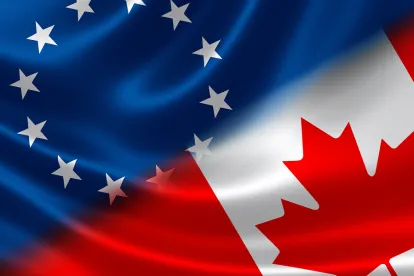Canadian exporters should have 500 million new consumers on their radar. The Canada – European Union Comprehensive Economic and Trade Agreement (“CETA”) has come into effect provisionally, immediately eliminating 98% of tariffs on goods exchanged between Canada and the European Union (“EU”).
This date has been a long time coming; CETA manifested from the joint study undertaken by the EU and Canada in 2009, with the earliest draft of an agreement in principle signed by former Prime Minister, Stephen Harper, and then EU President, José Manuel Barroso, in October 2013. CETA officially received approval by the EU’s parliament in February 2017 and Bill C-30, formally known as “An Act to implement the Comprehensive Economic and Trade Agreement between Canada and the European Union and its Member States and to provide for certain other measures”, was granted Royal Assent in Canada in May 2017. A joint statement issued on July 8, 2017 by Prime Minister Justin Trudeau and Jean-Claude Juncker, the President of the EU, laid the ground work for the provisional implementation of CETA on September 21, 2017.
Tariff Elimination
The most notable benefit of the CETA is the elimination of tariffs. Prior to its implementation, more than 9,000 tariff lines were used by the EU to classify imported goods and apply a tariff. The provisional implementation of CETA allows most Canadian-exported goods into the EU duty free. An additional one percent of tariff lines will be eliminated over the seven-year phase out period.
Importing Duty Free Goods
Entitlement to the CETA preferential tariff treatment is determined in accordance with the rules of origin set out in the CETA Protocol on Rules of Origin and Origin Procedures. On September 14, 2017, the Canada Border Services Agency issued Customs Notice 17-30, “Implementation of the Canada-European Union Comprehensive Economic and Trade Agreement”, which sets out important administrative details for importers before duty-free imports are processed. Customs Notice 17-30 should be read in conjunction with the CETA text, as well as the various regulations that the federal and provincial governments have created to bring CETA into effect.
Importers should undertake a three step process to ensure tariff-free access for their imports:
-
Review the Schedule of Commitments: Preferential tariff treatment is determined by reviewing the rule of origin of a good to determine whether the good satisfies the CETA’s rule of origin requirements. Customs Notice 17-30 provides the tariff rate code for goods originating in the EU. Importers must complete Form B3-3, contained in Customs Notice 17-30, by using their goods H.S. tariff classification numbers, which are 10 digit numbers provided on import documentation. Importers must match the H.S. tariff classification number with Canada’s Schedule of Commitments in Annex 2-1 of Chapter 2 of the Canada-EU CETA, which sets out which European goods are entitled to preferential tariff treatment.
-
Get an Origin Declaration: In order to claim the preferential tariff treatment accorded under the CETA, importers must have in their possession an Origin Declaration for the goods completed by the exporter in the EU country, as well as any necessary permits. The Origin Declaration and the various languages in which it may be completed are contained in Annex 2 of the Protocol on Rules of Origin and Origin Procedures. The Origin Declaration is often provided on an invoice, or can be contained on any other commercial document provided that it describes the originating product in sufficient detail to enable its identification.
While generally goods must be shipped directly from the EU to Canada in order to claim preferential treatment, the CETA does permit for certain exceptions. Article 14 of the Protocol on Rules of Origin and Origin Procedures provides that a product shall be considered originating in the EU or Canada if its undergoes limited forms of further production (such as unloading, reloading and operations necessary to preserve or transport the product) and remains under customs control while outside the territories of Canada or the EU.
-
Review Import Quotas: Importers must check to determine whether their imported goods are subject to quotas. If an importer does not have an import permit for quota goods, they will not be able to claim preferential tariff treatment. The most common examples of goods subject to quotas are cheese, textiles and apparel. Applications for quota allocations of these goods should be sent to Global Affairs Canada as soon as possible. For textile and apparel import quotas, importers should review the rules set out in Notice to Imports No. 899 “Textiles and Apparel for Import to Canada from the European Union and its Member States (Items 86.98 and 86.99 on Canada’s Import Control List)”.
In summary, an importer that is importing a good originating in the EU, with a duty reduced under the CETA Schedule of Commitments, with a valid Origin Declaration, and a valid import permit, if the good is subject to an import quota, will immediately benefit from the provisional implementation of CETA.
Industry Examples of Tariff Elimination
-
Agriculture: In the agricultural industry, roughly 94% of agricultural tariffs are eliminated on provisional implementation. While poultry and eggs are excluded from CETA, dairy, pork and beef all receive tariff-free treatment up to their import quotas (beef 50,000 tonnes, pork 81,000 tonnes and cheese 16,000 tonnes).
-
Fish and Seafood: Approximately 96% of fish and seafood products may now be imported tariff fee, with the remaining products subject to phased duty free access over the seven year implementation phase of CETA.
-
Forestry, Oil, Gas and Metal Products: Forestry, oil, gas and metal products are all now tariff free.
-
Automobiles: Tariffs on auto parts and some vehicles, such as road tractors, are completely eliminated on provisional implementation, while tariffs on other vehicles will be eliminated over the following seven years. However, as the EU is a major vehicle exporter, it is expected that tariff elimination will generally increase competition for Canadian manufactured vehicles that are marketed to Canadian consumers.
-
Service Industries: Canadian services personnel will now be treated the same way as those from the EU (subject to certain exceptions). The CETA aims to increase labour mobility through a binding and mutual recognition of certain professional qualifications. Barriers to international services trade such as citizenship, residency requirements and ownership and investment restrictions are reduced through the CETA. This arrangement will create temporary travel or relocation positions for short-term business visitors, investors, transferees and professionals.
-
Procurement: The EU procurement market is estimated to be over $3 trillion annually. Clients engaged in the national, regional and local government procurement markets in Canada can strengthen their businesses through securing new opportunities for European procurement projects. However, Canadian companies will also face enhanced competition from European companies in the previously protected sub-federal procurement market in Canada.
Reduces Barriers to Trade
The implementation of CETA also provides significant opportunities for Canadian and European companies to streamline and reduce costs in their operations in each other’s territories. It will significantly reduce barriers to trade between Canada and the EU by:
-
reducing customs procedures making the exportation of goods more efficient;
-
reducing processing times at international borders;
-
allowing Canadian products to the EU to be tested and certified in Canada for the relevant health, safety, consumer protection, environmental standards or technical rules and regulations applied in the EU; and
-
increasing labour mobility by reducing barriers for certain skilled professionals to gain temporary work.
Investor Protection
The portions of the CETA that apply to investment protection will not come into effect until full ratification of CETA, which requires the approval of all 28 EU Member Parliaments. To date, five countries (Latvia, Denmark, Spain, Malta and Croatia) have approved the trade agreement.
Conclusion
CETA arrives during one of the most turbulent periods of international trade in recent Canadian history. While Canada and the United States remain engrossed in negotiations surrounding a new North American Free Trade Agreement, CETA offers new opportunities, and challenges, for Canadian and European companies. It is imperative that companies immediately evaluate the options available to them under the CETA.





 />i
/>i

